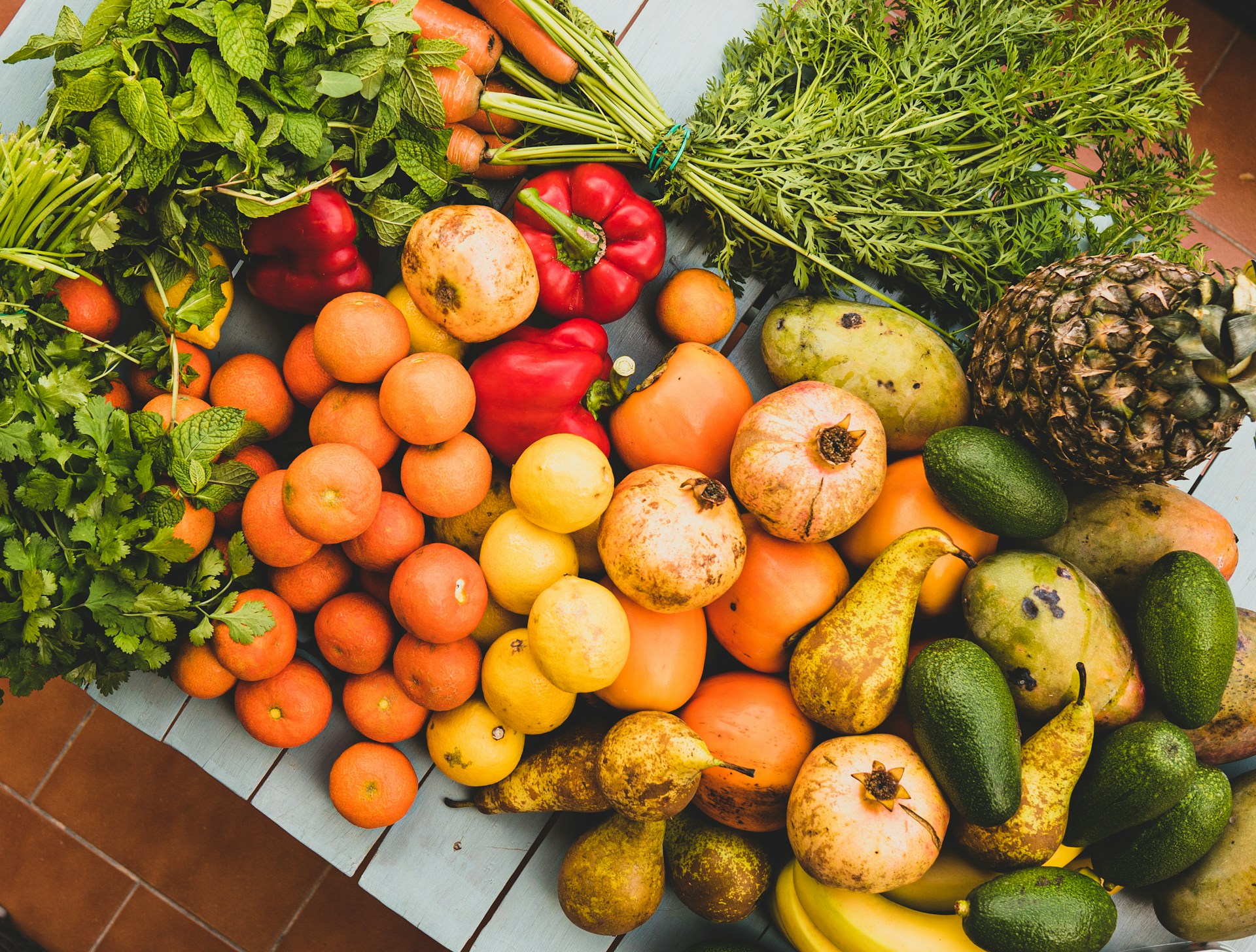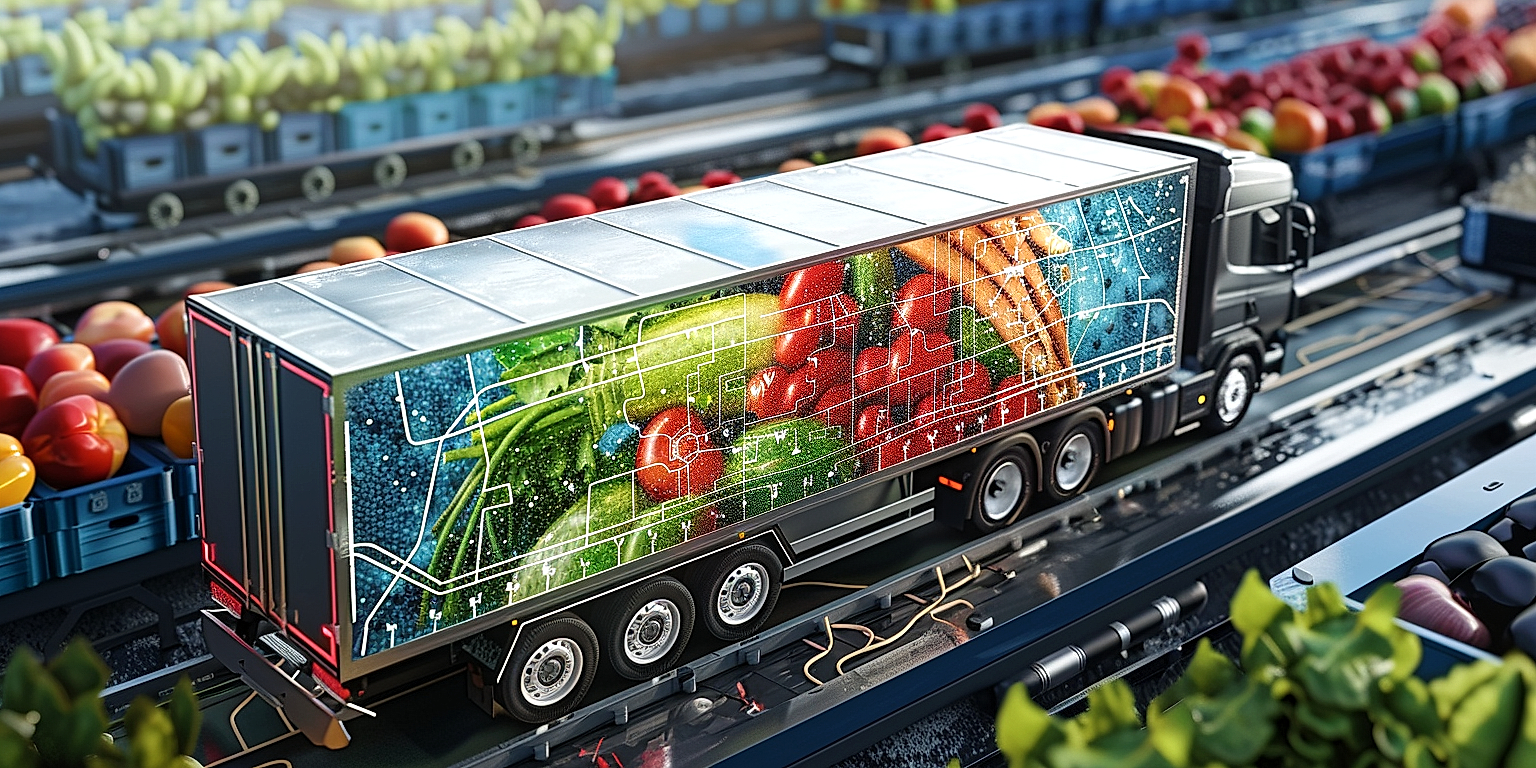The process of transporting produce from farms to markets is a complex operation.
A considerable part of its success lies in strategic route planning, which greatly impacts efficiency and cost-effectiveness.
There are many underlying variables that demand attention and careful consideration.
These factors extend beyond mere distance and travel time, delving into several dynamics that can significantly influence the shipping balance.
Understanding these factors operators can develop viable logistical strategies, ensuring fresh produce reaches its destination in the most efficient manner.
This write-up lays the groundwork, exploring these pivotal variables to better comprehend the intricacies of effective produce shipping.
Contents
Factors Influencing Route Selection In Produce Shipping
1. Distance and Time Required
The distance and time required to transport produce from the farm to the market or the customer is a significant factor when selecting the route for shipment.
This decision is not only about picking the shortest route because sometimes, even if a route is longer, it may prove faster due to better road conditions or less congestion.
Calculating the total distance that needs to be covered is the first step in figuring out the time required for the delivery.
The calculation should include not just the distance between the starting point and the final destination, but also the additional miles that may need to be traveled due to detours or multiple drop-off points.
Effective route planning must take into account the estimated travel time, traffic patterns, and transport schedules in addition to the exact distance.
Delays can significantly impact the quality of perishable produce, especially if they result in the goods being held in the vehicle for extended periods, under inadequate temperature control.
That’s why accurate time calculation is especially essential for produce shipments where punctuality can mean the difference between fresh and spoiled goods.
Other important considerations include the transporter’s working hours, timelines for crossing borders (for international shipments), and the availability times of loading and unloading teams at the pick-up and drop-off points.
It is also important to account for potential unpredicted delays caused by weather conditions, mechanical failures, or human factors like driver fatigue or illness.
Roads that are usually quiet during weekends can get congested on weekdays, and this factor should be taken into account.
A route that seems fast because it has a higher speed limit might end up being slower if it has busy intersections, low traffic flow, or frequent accidents.
In contrast, a route with a lower speed limit might be faster if it has less traffic and fewer disruptions, making it possible to maintain a steady speed.
In addition to the anticipated travel time, it is wise to add a buffer for unforeseen circumstances.
This extra time helps ensure that the delivery will still arrive in a timely manner even if minor issues arise along the route.
Astute route selection taking into account distance and time considerations can result in more consistent delivery timelines, lower transportation costs, reduced chances of produce spoilage, and higher customer satisfaction.
2. Traffic and Road Conditions
The examination of traffic and road conditions forms a crucial part in the process of route selection in produce shipping.
Routes plagued by regular and heavy traffic congestion can significantly slow down delivery times, impacting freshness of the produce.
In addition, the frequency of accidents along specific routes should be taken into consideration.
Routes with high accident rates might indicate poor road safety conditions which could jeopardize the transportation.
Furthermore, the physical condition of the roads is also pivotal in the decision-making process.
Poorly maintained roads with potholes and rough surfaces can cause damage to the vehicle and the perishable goods, thereby increasing costs.
Routes with regular roadwork projects might inordinately delay produce delivery.
On the other hand, if the selected route includes a number of well-maintained highways, the shipment has a better chance of making timely and efficient deliveries.
Factoring in the season and weather patterns also plays a part in route selection.
Routes that are frequently affected by heavy rains, snowfall, or other severe weather conditions can hamper produce delivery schedules.
Using the services of traffic and route planning software can aid in gathering all this crucial data, therefore optimizing the route selection.
In essence, all these factors pertaining to traffic and road conditions directly influence the speed, safety, and cost of produce shipping, ultimately deciding which routes are the most feasible for transportation.
Understanding these conditions requires not just historical data, but also real-time updates that allow for the planning of alternate routes if necessary.
Taking all these elements into account requires comprehensive planning and regular updates to ensure smooth and efficient produce transportation.
Thus, traffic and road conditions play a significant and ongoing role in influencing the strategy and execution of route selection in produce shipping.
While these factors can often be unpredictable and cause challenges, proper planning and management can help to minimize the risks and maximize the efficiency of produce shipping.
3. Transport Costs
When considering the factors that influence route selection in produce shipping, transport costs cannot be ignored.
The cost of freight transportation often forms a significant proportion of the total logistics costs in a supply chain.
The choice of transport mode, whether it’s by road, rail, air, or sea, directly impacts the overall cost of transporting produce.
Different transport modes offer varying rates, which can influence the selection of particular routes.
Fuel costs, driver wages, vehicle maintenance, and toll charges also determine the transportation costs when using road transport.
Given the fluctuating nature of these costs, shippers often have to continuously reassess their preferred routes to ensure cost efficiency.
In addition to direct costs associated with the chosen transport mode, there might also be indirect costs
This could include the costs of warehousing if goods need to be stored temporarily during transit, the cost of damage to goods due to poor road conditions, or the cost of delayed deliveries
While assessing transport costs, it’s crucial to consolidate loads to achieve the best shipping rates.
A shipper may choose a longer route that allows for consolidation of shipments over a shorter route that does not offer such opportunities.
Furthermore, the availability of return loads can significantly reduce transport costs
If a vehicle can deliver a load to a destination, and pick another load for the return journey, the total transport cost may be significantly lower than taking an empty vehicle back to the origin.
Negotiation and long-term freight contracts with carriers may also influence the routes chosen for shipping produce.
Having a long-term commitment with a carrier can secure lower rates and ensure the availability of transport during peak periods.
Paying attention to transport costs can lead to considerable savings, thereby improving the overall profitability of a business.
Failure to take into account these costs might lead to distortions in the total cost of the produce, affecting both the seller and the consumer adversely.
4. Vehicle Load Capacity
When selecting a route for produce shipping, the vehicle load capacity plays a crucial role.
Every vehicle used for transportation has a specific load capacity, denoting the maximum weight it can carry without compromising safety and efficiency.
Taking into account the vehicle load capacity is critical in ensuring that the vehicle is not overloaded, which can lead to significant problems, including damage to the vehicle and a decrease in fuel efficiency.
Moreover, an overloaded vehicle can pose a danger on the road, affecting not only the goods being transported but also other road users.
When planning the route, the transport organizer needs to estimate the total weight of the shipment and choose a vehicle with a suitable load capacity.
This choice might influence the route selection, as certain roads or areas might be inaccessible or unsuitable for larger, heavier vehicles.
Understanding a vehicle’s load capacity is fundamental to ensuring a safe and efficient transportation process, and therefore plays an important role in the route selection.
Furthermore, if the goods are going to be split among several vehicles, the load capacity of each one needs to be taken into consideration.
Deciding which goods go on which vehicle can be a logistical challenge that can be heavily influenced by vehicle load capacity.
In addition to the physical weight, the volume of the produce can also affect vehicle load capacity.
Some goods, though not particularly heavy, might be bulky and take up a lot of space, thus limiting the number of other goods that can be transported on the same vehicle.
This is another crucial aspect that a transport planner needs to consider, as it might require a larger vehicle or more vehicles, effectively influencing the route selection.
It is essential for transport planners to work closely with drivers and vehicle operators to fully understand the capabilities and limitations of each vehicle.
Through this, they can make informed decisions that ensure the most efficient use of resources and the safest, most effective route for the transport of produce.
Above all, the goal should always be to maximize efficiency and safety, all while ensuring the produce is delivered in a timely and fresh state.
5. Produce Perishability Level
The level of perishability of produce is among the key factors that influence the selection of shipping routes.
In the case of highly perishable goods like fruits and vegetables, it’s necessary to choose the fastest and most reliable routes.
The longer the duration of travel, the higher the chance of the produce perishing in transit.
Therefore, the level of the produce’s perishability determines the need for timeliness in delivery.
Choosing the right transport mode may be influenced by how sensitive the produce is to environmental conditions.
Hence, the need for specialized vehicles that possess cooling systems or temperature control mechanisms for such perishable goods.
The essence of such temperature-regulated transport is to help maintain the freshness and quality of the produce till it reaches the final consumer.
Moreover, for less perishable produce, different routes or modes of transport can be chosen without the fear of the produce getting spoilt.
These options might involve slower, more cost-effective routes.
In turn, these may reduce overall transport costs and hence, the cost of the commodities to the consumers.
It’s also important to note that the level of perishability may demand more frequent deliveries which in turn influences the choice of the shipping route.
A high level of perishability may necessitate frequent short trips or dedicated delivery routes to ensure the freshness of the product is maintained.
In contrast, goods with low perishability levels may not require as strict timing, and thus, allow for more flexible routing and scheduling.
The perishability of the produce essentially creates the need for a balance between speed, safety, and cost.
Regularity of delivery, timeliness, cost-effectiveness, and maintaining the quality of the produce are all underlain by the perishability level of the produce to be delivered.
All in all, the perishability level of the produce forms a crucial component with regards to the route decision-making process for shipping.
6. Availability of Delivery Infrastructure
When considering the route selection during produce shipping, it’s crucial to assess the availability of delivery infrastructure.
An efficient delivery infrastructure helps in streamlining the transport process, ensuring the timely and safe delivery of goods.
It includes the presence of well-maintained roads, railway lines, ports, airports, and more, depending on the mode of transport being used.
Without adequate infrastructure, transporting produce can become increasingly difficult and risky, dramatically affecting the overall transport costs and quality of the produce.
Moreover, the unavailability of the necessary delivery infrastructure might make some routes completely unfeasible for transportation purposes, hence, limiting the choices for route selection.
As such, you need to consider the factor of infrastructure availability and its quality while planning the shipping route for your produce.
An efficient delivery infrastructure can also provide additional facilities like warehouses for temporary storage, cold storage facilities for perishable produce, and so forth.
These facilities further enhance the flexibility of the shipping process, enabling adjustment and optimization of the shipping route as per the prevailing circumstances.
Besides, excellent delivery infrastructure with proper signage and information systems can facilitate smooth navigation and help avoid delays caused by route confusion.
Similarly, availability of service centers and fuel stations along the route are essential considerations in the case of road transport, thus being a part of effective delivery infrastructure.
Developing countries, often struggling with inadequate infrastructure, can limit the options for route selection, forcing you to opt for longer, costlier, and riskier routes.
Therefore, before deciding on a route for shipping produce, a thorough assessment of the existing delivery infrastructure is necessary.
On a broader level, the existence and maintenance of efficient delivery infrastructure are influenced by the political landscape and economic policies of the region.
Conditions such as political stability, security situation, investment in infrastructure development, and ease of doing business, among others, directly impact the quality and availability of the necessary delivery infrastructure.
Ultimately, the availability and state of delivery infrastructure play a major role in deciding the route for produce shipping.
Keeping the above factors in mind can assist in developing an optimal delivery plan that ensures the fresh and timely delivery of produce, while keeping costs at minimum.
7. Local Laws and Restrictions
When planning route selection for produce shipping, one crucial factor that companies need to consider in depth are Local Laws and Restrictions.
Each jurisdiction has its unique laws, regulations and restrictions relevant to freight transportation.
The restrictions may include weight limits, hours of operation, or type and size of vehicle allowed on specific roads.
Ignorance of such limitations may lead to heavy fines, delays, or total refusal of entry, thereby defeating the purpose of the careful route planning process.
Additionally, restrictions dictate what routes are available or the times when these routes can be accessed.
It is crucial to take into account seasonal restrictions that may apply in some regions such as restrictions because of harsh weather.
Compliance with local laws and restrictions doesn’t only avert fines and penalties but also contributes significantly to organizational citizenship and social responsibility.
Permits and licenses are other critical elements of local laws to consider when planning routes.
Some municipalities or jurisdictions may require a special permit or license to operate heavy commercial vehicles or to transport certain types of produce.
Another key factor is compliance with environmental laws.
Certain regions have strict regulations on carbon emissions and may require trucks to meet certain emission standards or to use certain environmentally friendly fuels.
Furthermore, laws on the transportation of specific agricultural products should be observed.
Some areas may have restrictions on the movement of certain fruit and vegetable products because of pest-control issues.
In such situations, decontamination procedures or other quarantines might be required before entry.
It is crucial to remember that legal requirements may change frequently and without much notice, so shippers must have a process to stay updated on changing laws.
Therefore, having a thorough understanding of local laws and restrictions pertaining to route selection for produce shipping will undoubtedly save time and money, prevent legal disputes, and promote smooth operation.
The Bottom Line
lines long.
Analyzing the multifaceted factors that impact produce transportation efficacy, such as distance, time, traffic conditions, vehicle load capacity, perishability levels, and infrastructural aspects, provides valuable insights for optimal logistics management.
Additionally, compliance with local laws and restrictions is imperative to avoid complications.
Hence, a comprehensive understanding of these aspects can significantly enhance the efficiency of produce transportation, positively impacting overall business productivity and profitability while ensuring top-notch quality for end consumers.




